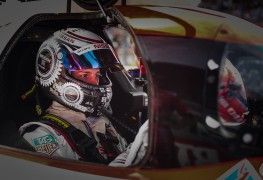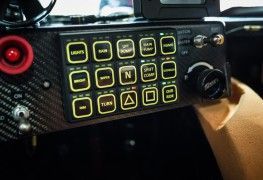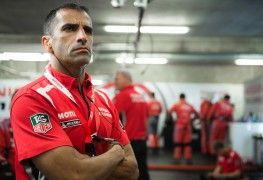Cars, through the passion for engineering and the urban culture of modifications, are one of those great hobbies reinforced by the Japanese patriotic spirit. In Japan, respect for local brands is at its highest. That's why they dominate the local market as they do.
In this local market, Nissan is one of the most prestigious brands with the greatest sporting prestige and recognition. It has earned it through decades of work and investment in competition.
Over the coming days and weeks we will be reviewing, one by one, all the racing models that Nissan has had throughout its history in the world of endurance until today, but the aim of this brief report is to provide an overview, so that you place yourself in situation and you can appreciate the dimension of the challenge and the project.
For the Japanese in the middle of the last century, Le Mans was a distant and prestigious endurance race, the preserve of the European manufacturers. At that time, Japanese engineering and the Japanese car industry was still a step behind that of the West. Cars were produced in volume, often under license from British manufacturers, but there was a lack of in-house development and a distinctive character.
As with Honda (with motorcycles) and Maza (also racing in endurance), Nissan began to conquer the Western market in the late 1970s. But it wanted to get rid of the stigma of "cheap brand" without technological content or differential value.
To do this, Nissan was clear from the start that it had to impress in Europe and the United States, and beat the local manufacturers at home.
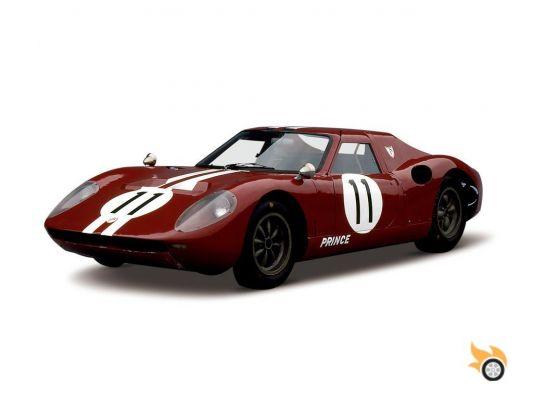
The Prince R380, inspired by the Porsche 904, was Nissan's first endurance prototype.
Looking back, it should be remembered that Nissan had been a pioneer in its own land, actively participating in the first Japanese Grand Prix at Suzuka, with a Fairlady 1500. But the firm's real local sporting breakthrough came in 1966. After the purchase of the "luxury" firm Prince, Nissan took under its wings the R380 project, a small and beautiful racing coupe inspired (we won't say cloned) by the Porsche 904 of the time. The aim of that prototype was none other than to try to beat the foreign firms at home by dominating the Japanese Grand Prix.
Once they managed to dominate the "home races", the next step was to try to win in the United States, the biggest market for Japanese manufacturers. In 1973 that challenge began, with the Datsun Z racing in IMSA and winning races, but it wasn't until 1985 that the company got really serious, creating the GTP-ZX, the first prototype developed and designed to win endurance championships in the United States.
Equipped with a supercharged V6 engine, closely related to that of the 300ZX Turbo of the time, the GTP-ZX had a difficult competitive start in its first three seasons, but was eventually able to win in 1988, 89 and 90 in the IMSA championship.
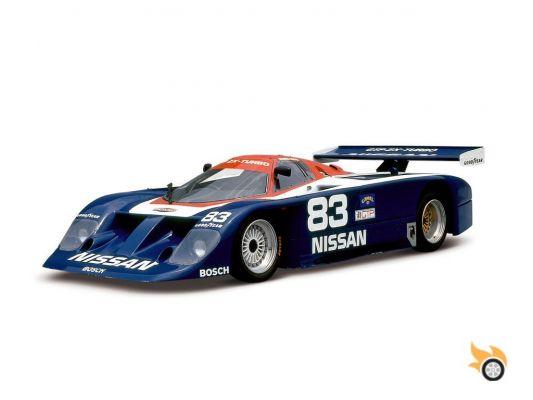
The Nissan GTP-ZX, powered by a turbocharged V6 derived from the 300ZX, dominated the IMSA series in the late 1980s.
It was in that same 1985 when, in parallel, Nissan felt the need to try to do something significant at Le Mans. After the experiments of working with March, using the 83G chassis designed "by a certain Adrian Newey" (I'm sure you've heard of it), the Japanese finally spent the money and invited March to develop a car specifically for them, the 85V. It was itself a March 85G, adapted to use the turbocharged V6 engine from the GTP-ZX. The result? An excellent thirteenth place at Le Mans 195, Nissan's debut at La Sarthé in 1986.
From then until 1990, Nissan would increase its resources every year to try to win at Le Mans, taking the race more and more seriously, until 1990, when the brilliant R90CK and its famous "more than a thousand horsepower" appeared.
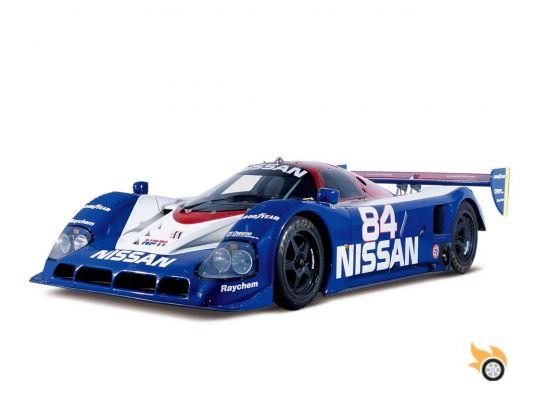
The R90CK, with over a thousand horsepower, took pole at Le Mans 1990
A problem during qualifying practice would leave Marc Blundell with a stuck turbocharger pressure control valve, meaning the engine was delivering over a thousand horsepower at all times, which helped the Briton unexpectedly take Nissan's first pole position at Le Mans in the senior class.
One of the two R90CKs competing at Le Mans would lead the race until dawn before breaking down. The other had already dropped out by then. Nissan cut back on some of the resources of its official attempts, and competed the following years in the World Sport Prototype Championship (today's WEC) with cars like the R92, which, while competitive, failed to shine.
It would be an unexpected car, developed in the United States to run under IMSA regulations, that would give Nissan its first Le Mans class victory. It was the 300ZX in 1994, which would take fifth place overall and victory in the GTS sub-category.
The following year Nissan tried the assault through the GT1 category with the Nissan GT-R LM (name almost identical to the current model), but found the McLaren F1 GTR unbeatable, something that would happen again in 1996.
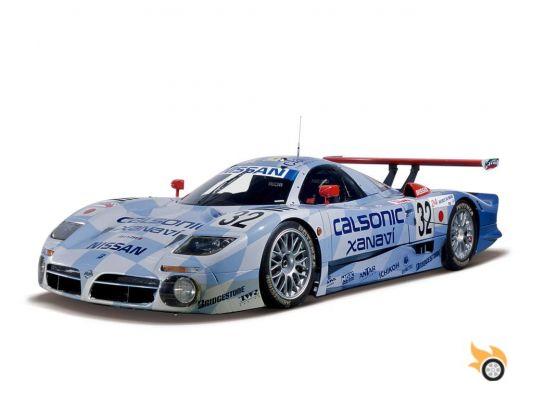
The beautiful R390 GT1 was probably the most serious attempt to win Le Mans to date.
It would be 1997 when we really got the feeling for the first time that Nissan was the real favourite to win Le Mans. Taking advantage of the GT1 'trap', almost every manufacturer opted to develop 'road cars' from which they homologated a registered unit for their local market as an excuse to race at La Sarthe. The R390 GT1 was born like this. The first year of the project, 1997, the car was devilishly fast, but was abandoned with reliability problems in the gearboxes. 1998 was a year in which the car showed reliability, but could not get past the third step of the podium, due to the lack of speed against the Porsche 911 GT1 and Mercedes CLR.
The following year, the ACO had killed the GT1 category, tired of the cheating of the manufacturers, and Nissan developed the R391, an open LMP1 that failed to shine in a race that took the BMW developed by Williams "to the first" and almost unexpectedly.
From then on, silence. Nissan's internal crisis, the purchase by Renault, had a huge influence on the cutback of the company's sports programs. But Nissan had to rise from the ashes. Although we will tell you in the coming days virtually all competitive programs of Nissan in its home market in this international competitive pause, it would not be until 2011 when Nissan would regain its position as a competitor at Le Mans, becoming a "major" engine of the LMP2 category with its four and a half liter V8 engine VK45, which would give and still gives him category victories.
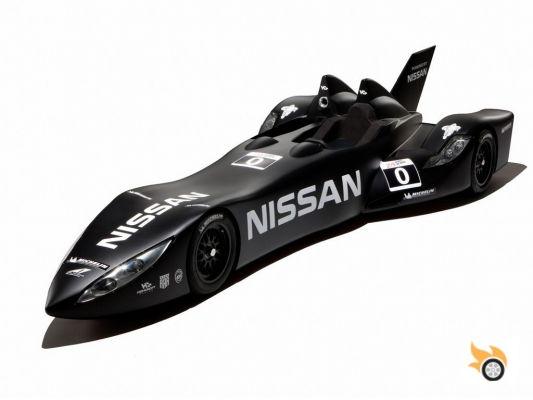
The DeltaWing and ZEOD RC projects competed in the Le Mans experimental category to demonstrate alternative technologies, more for marketing purposes than anything else.
In 2012 would come the madness of the DeltaWing. In between, Nissan with Ghosn at the head, had learned to focus on European racing. We will also talk about this in a separate report, but in summary we can tell you that the sports budgets until 2010 in Nissan were led by the R & D department, which gave importance to excellence and technological development. From 2011 onwards, the money for racing came from the marketing department, which not only valued competitiveness, but also media impact.
And that media impact was guaranteed by subsidizing and backing Ben Bowlby's DeltaWing project and the All American Racers, who fielded the very strange narrow front axle car in the Le Mans experimental category. A meridianly fast and reliable car, which ended up out of the race due to an accident.
2014 marked the return of the firm with the ZEOD RC with a very similar concept to the DeltaWing, but this time equipped with a hybrid mechanics, with the sole objective of achieving a complete electric lap at Le Mans, a goal that was achieved (by the skin of its teeth), harvesting shortly after an abandonment in the race due to problems with the gearbox.
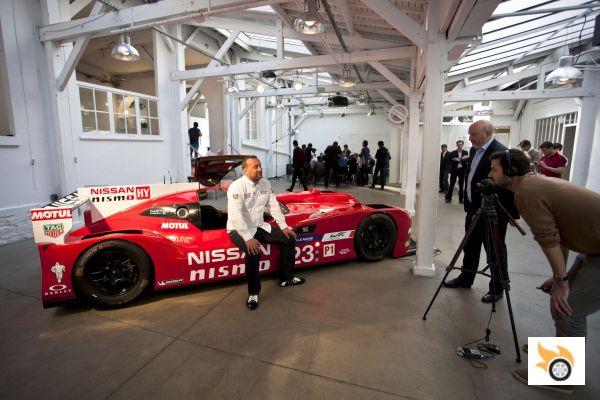
With Darren Cox (pictured) and Ben Bowlby at the helm, the GT-R LM Nismo is the craziest and weirdest project we've seen at Le Mans to date, but also Nissan's most serious attempt since the R390 GT1.
But since 2011 the important thing was cooking: Nissan was going to return to LMP1, with a serious project, but at the same time innovative. With Darren Cox at the head, and with Ben Bowlby as the mastermind, the project had to be an alternative to the established power. An alternative not only sporty, but also technological, with a radically different car, rare enough to make an impression on the media.
Thus was born the GT-R LM Nismo. A car we've already told you a lot about, and we'll be telling you much more about it over the next few days.
The return of Alfa Romeo: from the 1900 to the Giulia
